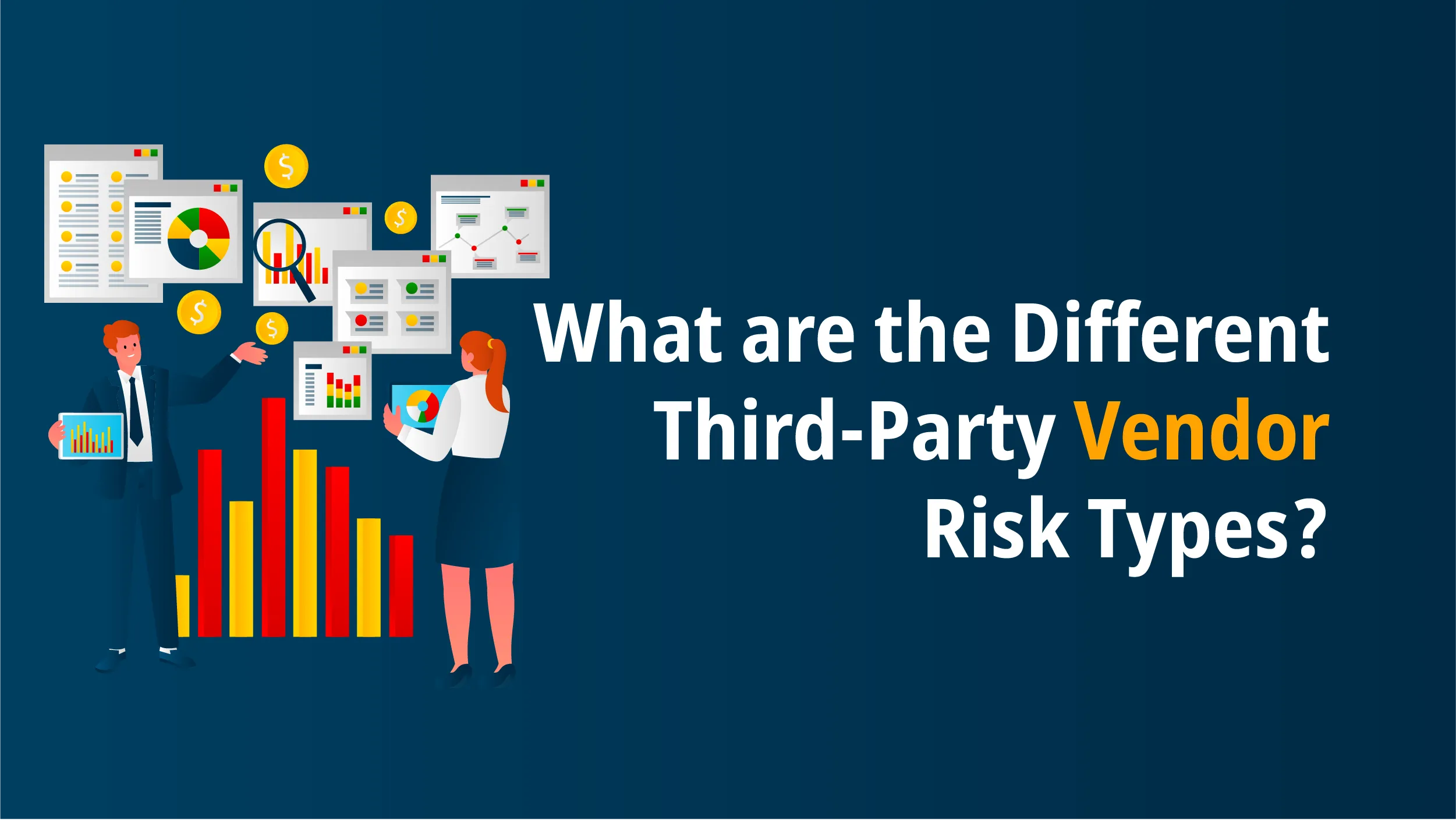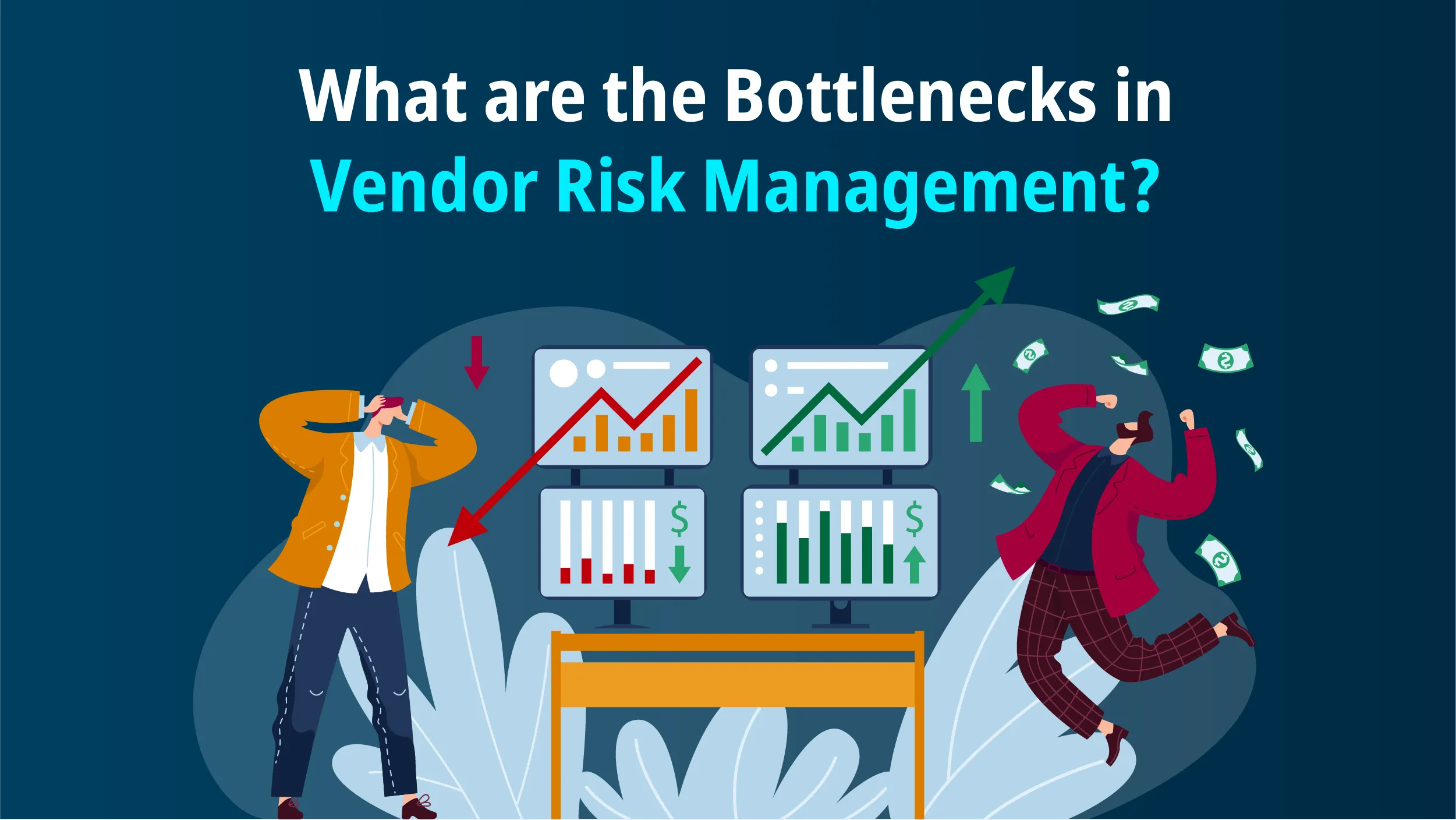Enterprises today have strategic business alliances with other organizations to streamline operations and ensure business continuity. However, onboarding partners on the business network can expose the IT infrastructure to significant risks that can cripple the operations. It is crucial for businesses to design and enforce third-party risk management strategies to avoid business disruptions.
In this article, let us explore the definition of vendor risk management, types of third-party vendor risks, their challenges, and best practices to tackle this problem.
What is Vendor Risk Management?
The vendor risk management approach is a risk assessment approach that primarily focuses on detecting and mitigating risks vendors pose to the business. Vendor risk management (VRM) managing third-party risks offers businesses better visibility into the vendor the business has collaborated with. It also offers transparency about how the organization works with them and which partners have embraced effective security controls.
As businesses today constantly evolve, VRM is also constantly evolving. Every day, enterprises might witness new security, continuity, privacy, and compliance-related challenges with their vendor network. Hybrid and work-from-home models have become the new model. It has made businesses significantly rely on various vendors like cloud providers to execute their operations. Hence, third-party risk management has become a broader and more significant concern. The goals of VRM may vary depending on the size, compliance laws, jurisdictions, and industry standards applicable to the company.
What are the Different Third-Party Vendor Risk Types?

Given below are the various types of third-party vendor risks posed by the multiple business partners:
1. Security Risks
Cybersecurity risks and threats are one of the most dangerous risks posed by third-party vendors on business networks. Hence, cyber threat and risk assessment is essential before onboarding a vendor on the business network. There are various cyber risks such as data breaches, Ransomware, distributed denial of service (DDoS), and other attacks that can cripple your business operations to its core. Cybercriminals get access to the business network through third-party vendors on the IT infrastructure.
2. Risk Related to Compliance
There are various government regulatory bodies that design and enforce various regulations to ensure the protection of sensitive information and systems. Following are a few of the regulations that are enforced by governments globally:
- Health Insurance Portability and Accountability Act (HIPAA)
- California Consumer Privacy Act (CCPA)
- General Data Protection Regulation (GDPR)
- New York SHIELD Act
These regulations mandate enterprises to safeguard the personal information of their clients and employees. There are a few other regulations that mandate businesses to protect non-disclosure financial information. Enterprises that do not comply with these regulations can have significant fines and penalties and even hamper their reputation.
3. Monetary Risk
Purchasing teams need to have better visibility into the financial transactions of the vendor. Procurement teams should have a clear understanding of the debts they owe and customer credits of the vendors. If the vendor declares bankruptcy, it would lead to business losses and significantly hamper the supply chains.
4. Operational Risks
Businesses need to be vigilant about their environmental, social, and governance (ESG) strategies. The population and government authorities globally are becoming increasingly concerned about the ESG policies the organization embraces. Enterprises would not like to be defamed with accusations such as their supply chain violates human rights, hampers the environment, or uses a child as labor. According to a report by EY, nearly 23% of survey respondents stated they stopped working with a key supplier if they did not meet ESG requirements.
5. Reputational Risks
If your organization gets negative or adverse media coverage concerning a third-party vendor risk, it can hamper the brand’s reputation. If one of the vendors is involved in any of the malpractices, the entire supply chain can be defamed.
Also Read: What Is Procurement Intelligence? Advantages & Disadvantages
What are the Bottlenecks in Vendor Risk Management?

Developing a robust vendor risk management process can be a challenging task that needs strategic planning and implementation. Following are a few challenges that decision-makers can witness while developing a VRM strategy for their organization:
1. Understanding All The Third-Party Vendors Across the Enterprise
Businesses today collaborate with multiple vendors across various departments, locations, and functions. One of the most significant challenges in managing third-party risks is determining all the vendors that the enterprise is partnered with.
2. Vendor Risk Assessment
Simply identifying all the vendors on the business network will not do the job. Assessing the risk the vendor poses can be a challenging and time-consuming task. This bottleneck becomes substantial for enterprises that leverage spreadsheets or other manual strategies to collect and monitor risks.
3. Establishing Third Party Risk Tolerance
In order to make informed decisions about the risks a vendor poses to an organization, it is crucial to understand and set the risk tolerance levels. Decision makers need to enforce maximum thresholds for managing a risk exposed by a third-party vendor.
4. Set Due Diligence Protocols
Enterprises need to embrace due diligence protocols to address a variety of aspects, including monetary stability, governance, and cybersecurity.
5. Agreement Compliance
It is critical that vendors meet all the terms and conditions laid out in the contract, particularly those related to security and compliance needs.
6. Continuous Monitoring Of Vendor Performance
Business continuity plays a crucial role in success. Organizations need to keep a constant track of the vendor’s performance and service level agreements (SLAs). It can be challenging for businesses to continuously monitor the performance of the third party and ensure whether they meet the SLAs or not.
7. Stay Updated with the Changes in the Regulations
The government bodies globally are constantly evolving the rules and regulations to ensure that sensitive information is safe. Continuous monitoring of the regulations and keeping track of the changes can be a challenging factor.
What are the Best Strategies to Manage Third-Party Vendor Risks?
Following are a few strategies that businesses can consider to detect and mitigate vendor risks:
- Organizations need to evaluate the potential risks and avoid partnering with vendors that pose risks.
- It is essential to set protocols that identify the risks well in advance. Additionally, it is also crucial to implement and evaluate the controls that effectively minimize the occurrence of risks or severity.
- Enterprises can have efficient vendor risk management practices that allow them to have minimum impact on their finances. Taking insurance is an effective way to mitigate the financial impact of the risks. Having insurance will not eliminate the possibility of risks.
- It is inevitable to eliminate all the potential risks. Businesses need to be aware of the potential type of vendor risks and establish proactive vendor risk management strategies to minimize the impact of these threats.
- Business decision-makers need to determine which third-party risk management strategies work for them. This will rely on multiple factors such as the organization’s risk appetite and business objectives. Collaborating with teams throughout the enterprise will assist in having a holistic view of the third-party risks.
Wrapping Up Vendor Risk Management
Determining and segmenting the third-party vendor risks based on the types is an effective approach to come up with an action plan to manage the risks. The vendor risks can evolve with time; it is essential to continuous monitoring of the risk exposed by the vendors and make strategic changes to the VRM.




